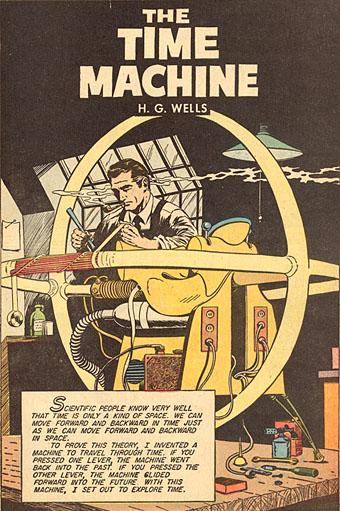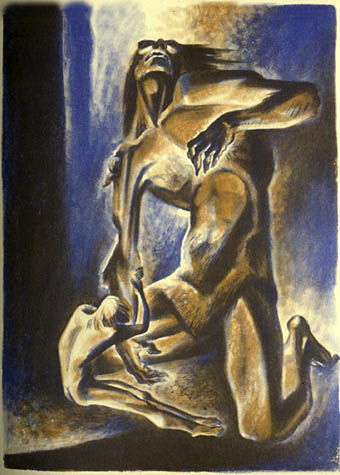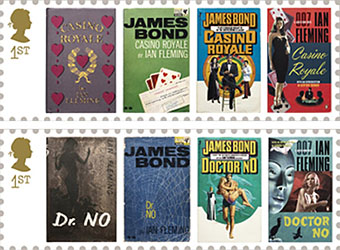
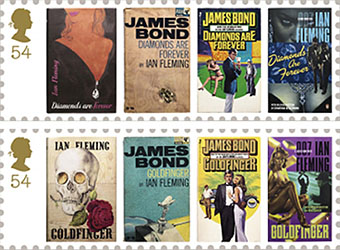
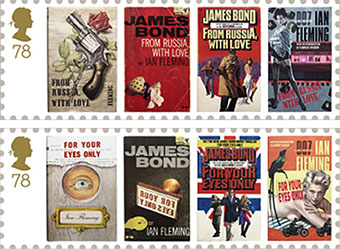
Proving once again the centrality of James Bond to contemporary British identity, the Royal Mail releases these stamps on January 8th, 2008, the 100th anniversary of Ian Fleming’s birth. If a sexist state assassin seems an awkward choice of cultural ambassador, Alan Moore and Kevin O’Neill present a more iconoclastic view of the super spy in the Black Dossier, the latest volume in their unfolding history of the League of Extraordinary Gentlemen.
Good to see that the stamp designs above include the Pan paperback covers from 1963. (The other examples are the first editions from Jonathan Cape, the 2006 Penguin reprints and what appear to be a set of Seventies reissues.) A friend of mine at school had a collection of the Pan books and they remain my favourite Bond book designs, not least because they were some of the first book covers to strike me as being well-designed rather than well-illustrated. What the Flickr link doesn’t show is the die-cut holes in the Thunderball jacket which made the cover seem as though it was pierced by bullets, the kind of expensive production detail you rarely see on anything other than a bestseller.
And while we’re on the subject of Bond design, Daniel Kleinman’s superb Casino Royale title sequence is on YouTube.
Elsewhere on { feuilleton }
• The book covers archive
Previously on { feuilleton }
• Please Mr. Postman

